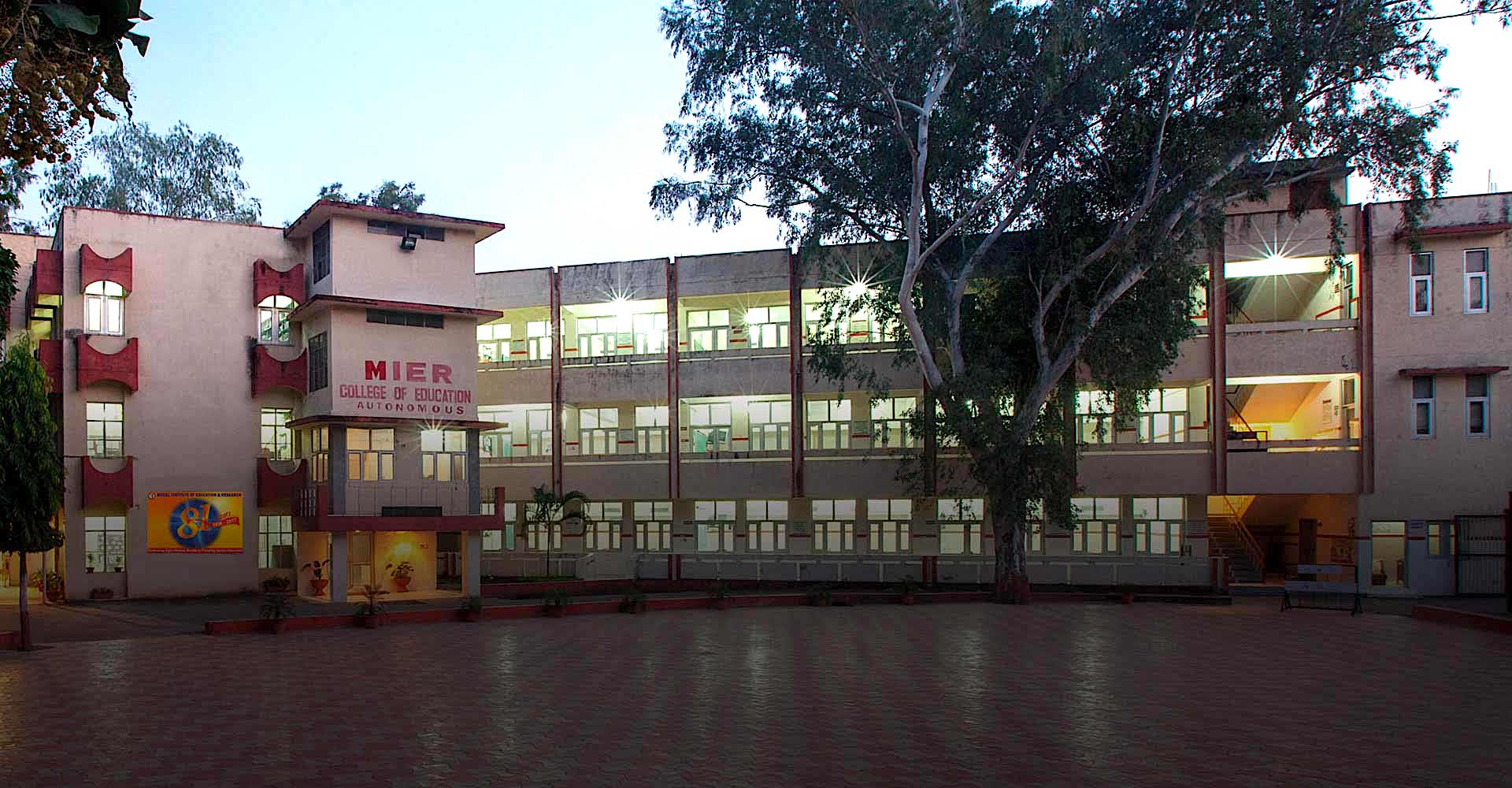COVID-19 Emergency Remote Teaching: The Perceptions, Challenges And Coping Strategies Of Higher Education Students In Ghana.
DOI:
https://doi.org/10.52634/mier/2022/v12/i2/2311Keywords:
Emergency Remote Teaching, Student Perceptions, Coping Strategies, ChallengesAbstract
Emergency Remote Teaching (ERT) is a mode of teaching usually triggered by disasters and pandemics such as the deadly Coronavirus. This study used a self-reported questionnaire to investigate student perceptions, challenges, and coping strategies during ERT at a public university in Ghana. Using a randomly selected sample of 80 students, the study established the relationships between student perceptions and coping strategies, perceptions, and challenges. Out of the 80 respondents, 76 questionnaires were duly completed and were analysed using partial least square structural equation modelling (PLS-SEM). The bootstrapping results indicate that student perceptions of ERT have a significantly positive relationship with their coping strategies, and the challenges have a significant negative relationship with coping strategies. However, student perceptions did not significantly correlate with students’ challenges. Results recommend that the university put appropriate measures in place to reduce the challenges associated with ERT, which will improve students’ perceptions since the pandemic is still raging with a series of waves. Challenges such as lack of access to digital devices and high-speed internet should also be addressed urgently.
Downloads
Metrics
Downloads
Published
How to Cite
Issue
Section
License
Copyright (c) 2022 Justice Kofi Armah, Emmanuel Arthur-Nyarko, Alexander Asante

This work is licensed under a Creative Commons Attribution 4.0 International License.
The articles published in the MIER Journal of Educational Studies, Trends and Practics (MJESTP) are distributed under the terms of the Creative Commons Attribution License (CC BY 4.0), which permits unrestricted use, distribution, and reproduction in any medium, provided the original author and source are credited.
- Copyright on any open access article in the MIER Journal of Educational Studies, Trends and Practics (MJESTP) published by Model Institute of Education and Research (MIER) is retained by the author(s).
- Author(s) grant MIER a license to publish the article and identify himself/herself/themselves as the original publisher.
- Authors also grant any third party the right to use the article freely as long as its integrity is maintained and its original authors, citation details and publisher are identified.
- The Creative Commons Attribution License 4.0 formalizes these and other terms and conditions of publishing articles.
References
Adarkwah, M. A. (2021). I’m not against online teaching, but what about us? ICT in Ghana post Covid-19. Education and Information Technolo- gies,26(2),1665-1685. https://doi.org/10.1007/s10639-020-10331-z
Al-Hunaiyyan, A., Alhajri, R. A., & Al-Sharhan, S. (2018). Perceptions and challenges of mobile learning in Kuwait. Journal of King Saud University-Computer and Information Sciences, 30(2), 279-289. https://doi.org/10.1016/j.jksuci.2016.12.001
Ancho, I. (2020). Graduate education during COVID-19 pandemic: Inputs to policy formulation in the new normal. Recoletos Multidisciplinary Research Journal, 8(2), 87-105. https://doi.org/10.32871/rmrj2008.02.07
Baloran, E. T. (2020). Knowledge, attitudes, anxiety, and coping strategies of students during COVID-19 pandemic. Journal of Loss and Trauma, 25(8), 635-642. https://doi.org/10.1080/15325024.2020.1769300
Chandra, A. (2021). The use of virtual-motivation to engage students on lessons in online teaching. JELITA, 1-10.
Daniels, J. K., Bluhm, R. L., & Lanius, R. A. (2013). Intrinsic network abnormalities in posttraumatic stress disorder: Research directions for the next decade. Psychological Trauma: Theory, Research, Practice, and Policy,5(2),142-148. https://doi.org/10.1037/a0026946
Demuyakor, J. (2020). Coronavirus (COVID-19) and online learning in higher institutions of education: A survey of the perceptions of Ghanaian international students in China. Online Journal of Communication and Media Technologies, 10(3), e202018. https://doi.org/10.29333/ojcmt/8286
d’Orville, H. (2020). COVID-19 causes unprecedented educational disruption: Is there a road towards a new normal? Prospects, 49, 11-15. https://doi.org/10.1007/s11125-020-09475-0
Frydenberg, E. (2017). Coping and the challenge of resilience. Palgrave Macmillan.
Garson, G. D. (2016). Partial least squares: Regression and structural equation models (2016 ed). Statistical Associates Publishing.
Gil, S. (2005). Coping style in predicting posttraumatic stress disorder among Israeli students. Stress & Coping, 18(4), 351-359. https://doi.org/10.1080/10615800500392732
Hair, J. F., Hult, G. T. M., Ringle, C. M., & Sarstedt, M. (2014). A primer on partial least squares structural equation modeling. Sage.
Hair, J. F., Hult, G. T. M., Ringle, C. M., & Sarstedt, M. (2017). A primer on partial least squares structural equation modeling (pls-sem) (2nd ed.). Sage.
Hair, J. F., Ringle, C. M., & Sarstedt, M. (2011). PLS-SEM: Indeed a Silver Bullet. Journal of Marketing Theory and Practice, 19(2), 139-152. https://doi.org/10.2753/MTP1069-6679190202
Hair, J. F., Sarstedt, M., Ringle, C. M., & Gudergan, S. P. (2018). Advanced issues in partial least squares structural equation modeling (pls-sem). Sage. Hamid, A., Sami, M. R., Mohmad, W., S, & H, M. (2017). Discriminant Validity Assessment: Use of Fornell & Larcker criterion versus HTMT Criterion. Journal of Physics: Conference Series, 890(1), 012163. https://doi.org/10.1088/1742-6596/890/1/012163
Henseler, J., Ringle, C. M., & Sinkovics, R. R. (2009). The use of partial least squares path modeling in international marketing. Advances in International Marketing,20,277-319. https://doi.org/10.1108/S1474-7979(2009)0000020014
Hodges, C., Moore, S., Lockee, B., Trust, T., & Bond, A. (2020). The difference between emergency remote teaching and online learning. Educause review, 27, 1-12.
Karatzias, T., Shevlin, M., Fyvie, C., Hyland, P., Efthymiadou, E., Wilson, D., ... M (2017). Evidence of distinct profiles of posttraumatic stress disorder (PTSD) and complex posttraumatic stress disorder (CPTSD) based on the new ICD-11 trauma questionnaire (ICD- TQ). Journal of Affective Disorders, 207, 181-187. https://doi.org/10.1016/j.jad.2016.09.032
Keswani, R. N., Sethi, A., Repici, A., Messmann, H., & Chiu, P. W. (2020). How to maximize trainee education during the coronavirus disease- 2019 pandemic: perspectives from around the world. Gastroenterol- ogy,159(1), 26-29. https://doi.org/10.1053/j.gastro.2020.05.012
Kline, R. B. (2015). Principles and practice of structural equation modeling. Guilford.
Larry, D. (2020). Back to virtual school: Education embraces remote learning. Retrieved from https://www.zdnet.com/article/online-learning-gets-its-moment-due-to-covid-19-pandemic-heres-how-education-will-change/
Lawrence, J., Ashford, K., & Dent, P. (2006). Gender differences in coping strategies of undergraduate students and their impact on self-esteem and attainment. Active learning in higher education, 7(3), 273-281.
Lazarus, R. S., & Folkman, S. (1984). Stress, appraisal, and coping. Springer publishing company.
Leacock, C. J., & Warrican, S. J. (2020). Helping teachers to respond to COVID-19 in the Eastern Caribbean: issues of readiness, equity and care. Journal of Education for Teaching, 46(4), 576-585. https://doi.org/10.1080/02607476.2020.1803733
Lyons, Z., Wilcox, H., Leung, L., & Dearsley, O. (2020). COVID-19 and the mental well-being of Australian medical students: impact, concerns and coping strategies used. Australasian Psychiatry, 28(6), 649-652. https://doi.org/10.1177/1039856220947945
Mahyoob, M. (2020). Challenges of e-Learning during the COVID-19 pandemic experienced by EFL learners. Arab World English Journal, 11(4),351-362. https://doi.org/10.24093/awej/vol11no4.23
Mohmmed, A. O., Khidhir, B. A., Nazeer, A., & Vijayan, V. J. (2020). Emergency remote teaching during Coronavirus pandemic: The current trend and future directive at Middle East College Oman. Innovative Infrastructure Solutions, 5(3), 1-11. https://doi.org/10.1007/s41062-020-00326-7
Owens, L. K. (2002). Introduction to survey research design. SRL Fall. Retrieved from http://www.srl.uic.edu
Purnomo, S. H., & Kusnandar. (2019). Barriers to acceptance of information and communication technology in agricultural extension in Indonesia. Information Development, 35(4), 512-523. https://doi.org/10.1177/0266666918767484
Rea, L. M., & Parker, R. A. (2014). Designing and conducting survey research: A comprehensive guide. John Wiley & Sons.
Sabah, N. M. (2016). Exploring students’ awareness and perceptions: Influencing factors and individual differences driving m-learning adoption. Computers in Human Behaviour, 65, 522-533. https://doi.org/10.1016/j.chb.2016.09.009
Salman, M., Asif, N., Mustafa, Z. U., Khan, T. M., Shehzadi, N., Hussain, K., ... T, M. (2020). Psychological impact of COVID-19 on Pakistani university students and how they are coping. MedRxiv. https://doi.org/10.1101/2020.05.21.20108647
Schwarzer, R., & Jerusalem, M. (1995). Optimistic Self-Beliefs as a Resource Factor in Coping with Stress. Stress and Communities: Impact and Intervention,80. https://doi.org/10.1007/978-94-015-8486-9_7
Stork, C., Calandro, E., & Gillwald, A. (2013). Internet going mobile: internet access and use in 11 African countries. info, 15(5), 34-51. https://doi.org/10.1108/info-05-2013-0026
Subedi, S., Nayaju, S., Subedi, S., Shah, S. K., & Shah, J. M. (2020). Impact of E-learning during COVID-19 Pandemic among Nursing Students and Teachers of Nepal. International Journal of Science and Healthcare Research, 5(3), 68-76.
Tabatadze, S., & Chachkhiani, K. (2021). COVID-19 and emergency remote teaching in the country of Georgia: Catalyst for educational change and reforms in Georgia? Educational Studies, 57(1), 78-95. https://doi.org/10.1080/00131946.2020.1863806
UNESCO. (2000). The Dakar Framework for Action.
UNICEF. (2020). UNICEF and Microsoft launch global learning platform to help address COVID-19 education crisis. Retrieved from https://www.unicef.org/ukraine/en/press-releases/unicef-and-microsoft-launch-global-learning-platform-help-address-covid-19-education
Wong, K. K. K. (2013). Partial Least Squares Structural Equation Modeling (PLS-SEM) Techniques Using SmartPLS. Marketing Bulletin, 24.
Zepp, P., Potter, D., Haselwood, C., & Britt-Lutter, S. (2018). The influence of coping strategies on college students’ grade point averages. Family and Consumer Sciences Research Journal, 47(1), 73-86. https://doi.org/10.1111/fcsr.12274





















